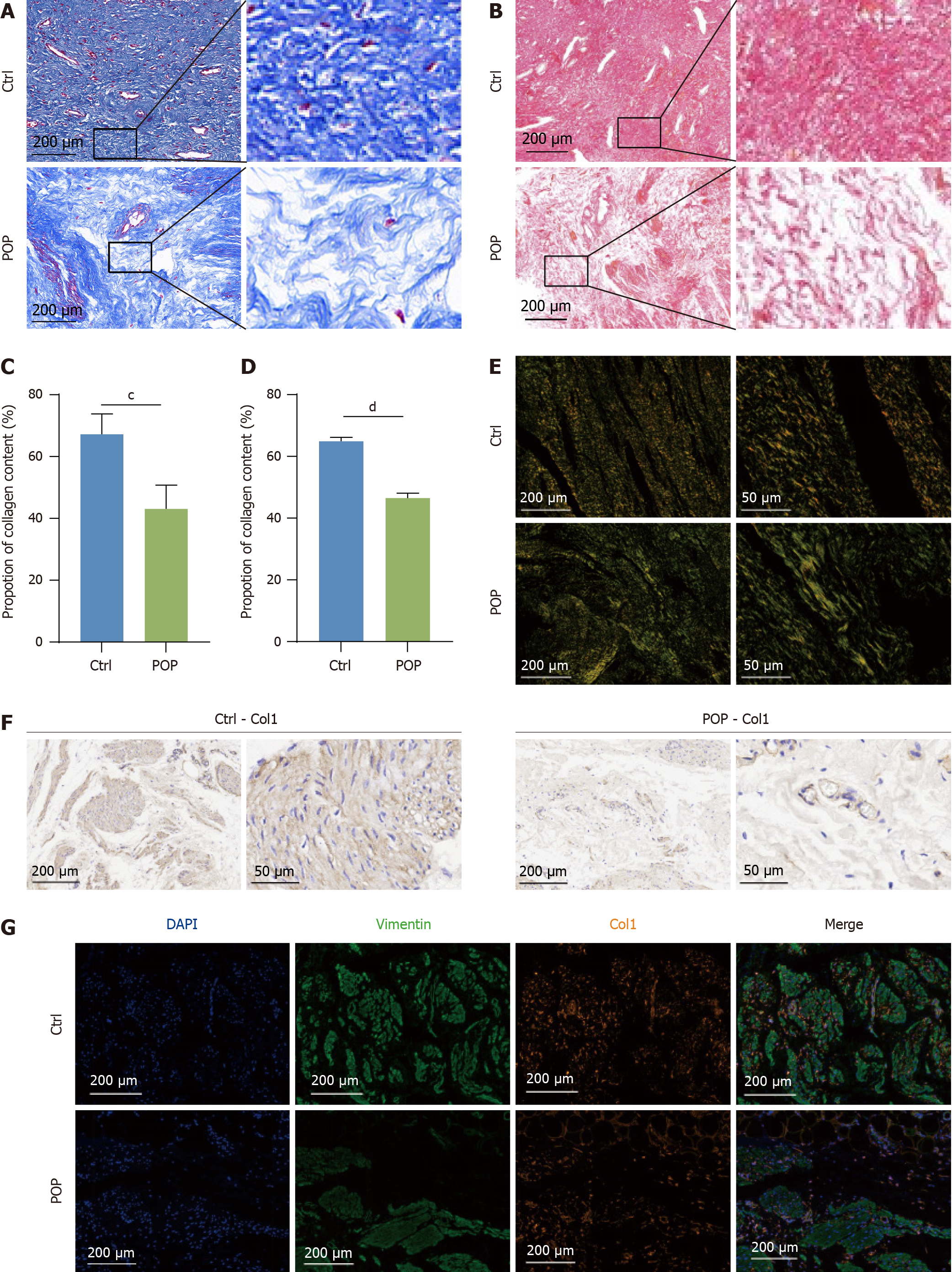Copyright
©The Author(s) 2024.
World J Stem Cells. Jun 26, 2024; 16(6): 708-727
Published online Jun 26, 2024. doi: 10.4252/wjsc.v16.i6.708
Published online Jun 26, 2024. doi: 10.4252/wjsc.v16.i6.708
Figure 2 Differences in human vaginal collagen deposition between patients with and without pelvic organ prolapse.
Disordered collagen fibers in the pelvic organ prolapse vaginal wall. A: Masson’s trichrome staining images of vaginal tissues; B: Images of vaginal tissues stained with Sirius Red were collected by brightfield microscopy; C and D: Quantification of the collagen content in A and B; E: Sirius Red-stained tissues were scanned via polarized light microscopy; F: Representative immunohistochemistry images showing the distribution of Col1 in the human vaginal wall; G: Immunofluorescence showing the expression of Col1 and vimentin (a fibroblast marker) in the human vaginal wall. cP < 0.001; dP < 0.0001. POP: Pelvic organ prolapse.
- Citation: Xu LM, Yu XX, Zhang N, Chen YS. Exosomes from umbilical cord mesenchymal stromal cells promote the collagen production of fibroblasts from pelvic organ prolapse. World J Stem Cells 2024; 16(6): 708-727
- URL: https://www.wjgnet.com/1948-0210/full/v16/i6/708.htm
- DOI: https://dx.doi.org/10.4252/wjsc.v16.i6.708









